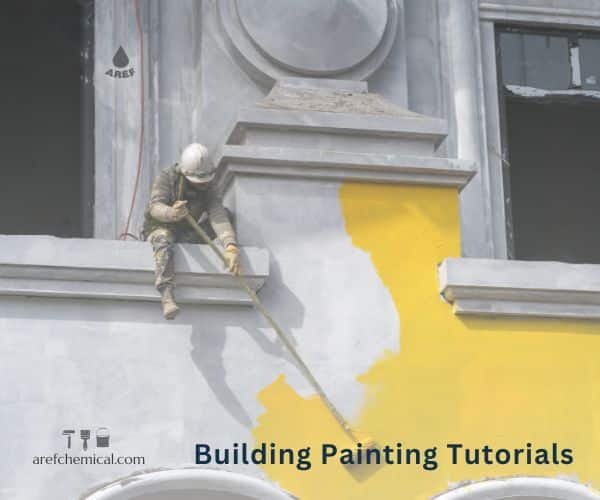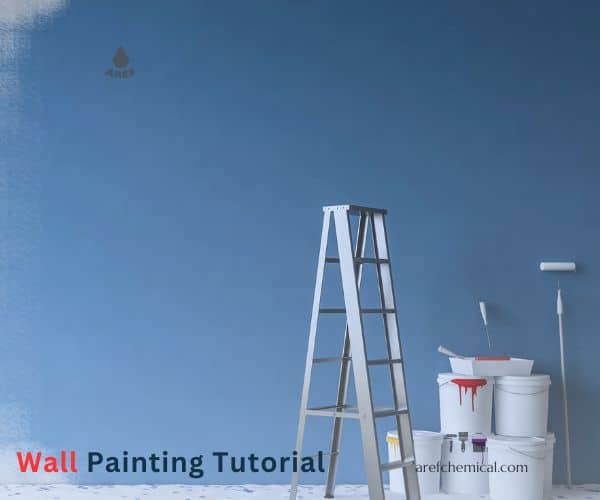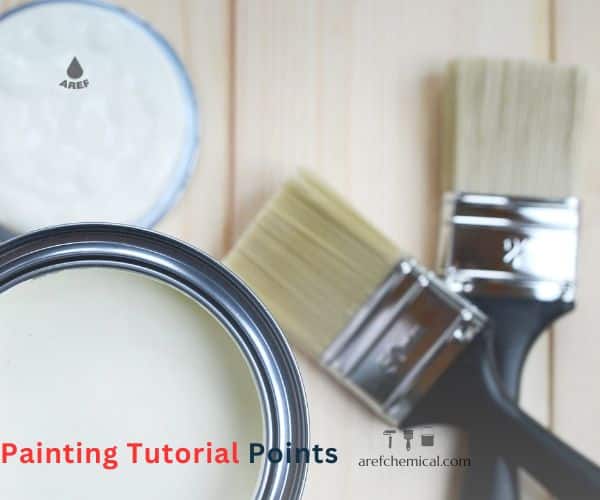Painting tutorials are one of the great ways to change the appearance and renovate old items and furniture. This is a fun and creative way to add color and personality to your home furnishings. Painting various indoor and outdoor items can be a great way to refresh your decor, hide imperfections, or even show off your creativity. In this article, we briefly outline the general steps for painting some common fixtures and provide general tips and guidelines for painting various types of fixtures, including walls, furniture, and accessories.
Painting tutorial for different items
Every device you have at home has its own special concern in painting. As a result, each painting tutorial will be different. We give the main explanations about each.
Walls: Use good quality latex or acrylic paint to paint the walls. Use a brush or roller with the appropriate bristle length to cover a large area.
Furniture: To paint furniture, use special furniture paint. Before painting, be sure to sand the furniture and remove any old paint.
Accessories: To paint the accessories, you can use different types of colors and finishes. Spray paint, chalk paint, and acrylic paint are all popular options for painting accessories.
With a little patience, you can enjoy painting your furniture to create a new and unique look in your home.
Coloring tips
Use the right brush or roller: The type of brush or roller you use depends on the type of paint and the desired surface. For smooth surfaces, you can use a roller, and for uneven surfaces or corners, use a brush.
Mix the paint thoroughly: Before using, mix the paint thoroughly to ensure it is homogeneous.
Apply paint in thin layers: Instead of applying one thick layer of paint, apply two or three thin layers of paint. This will make the paint dry evenly and prevent streaking.
Wait between coats: Be sure to let the previous coat dry completely before applying the next coat of paint.
Items needed:
The right color for the type of surface you want to paint
Brushes, rollers, or other painting tools
paint tray
Cloth or plastic to protect surrounding surfaces
sandpaper
can
Lining
gloves
safety glasses
Mask
levels:
- Surface Preparation: Prepare the surface properly before starting painting. This includes cleaning the surface, sanding off any roughness or peeling old paint, and filling any holes or cracks with putty.
- Priming: After the surface is prepared, you should apply a suitable primer layer. The primer helps the paint adhere evenly and prevents rust or peeling of the paint in the future.
- Painting: After the primer is completely dry, you can start painting. Use a good-quality brush or roller and apply the paint evenly over the surface. Depending on the type of paint, you may need to apply two or three coats.
- Protect your work: After you finish painting, you need to protect your work from dust and dirt. Allow the paint to dry completely, then remove any protective cloth or plastic.
Additional tips
Read the manufacturer’s instructions before using any paint.
Paint in a well-ventilated area and wear a mask and safety glasses to protect against paint fumes and fumes.
If you’re having trouble painting a large area like a wall, get help from a professional painter.
Use a damp cloth to wipe off excess paint. If the paint spills where it shouldn’t, use a damp cloth to wipe it off.
Clean your tools. After painting, be sure to clean your brushes, rollers, and other tools with soap and water.
Painting various items, such as walls, tables, cabinets, and wooden accessories, will help you to give your home or office a fresh and new look. With a little patience and by following the steps in this article, you can easily do it yourself.
Building painting training
I will explain to you some simple and efficient tricks to teach you how to paint a building:
- Reviewing ideas and designs:
Before you start painting, check your ideas and designs. Decide which parts of the house you want to paint and what designs to use. Also, do you want to paint the ceiling as well or not?
- Calculation of duration:
The duration of painting the building depends on the space, painting method, and your skill in this work. To calculate the duration, pay attention to the size of the space and the steps ahead of the work.
- Color selection:
Choose the color you want. Use tools to test colors on the wall to see the final result before you commit.
With these tricks, you can create a house with the desired color. Good luck.
Ceiling painting tutorial
Of course, painting the roof of the building is an important step in home beautification. In the following, we explain the ceiling painting tutorial, and training and describe its steps.
- Roof preparation:
– Before painting the ceiling, empty the room and cover the walls with masking tape.
– The roof is cleaned and sanded until the surface is smooth.
– Apply a layer of primer on the ceiling so that the color is better absorbed.
- Roof lining:
– After the primer dries, you can do the lining. The primer covers uneven spots and color density.
- Original coloring:
– To paint the ceiling, first apply a layer of paint in the form of zigzag lines on the ceiling.
– Then paint over the zigzags with straight movements.
– After the paint dries, you can collect your supplies.
With these tricks, you can paint the roof of your house beautifully.
A few painted notes
In this section, I will introduce a number of painting techniques with different colors:
- Oil colored:
– Painters use oil paint to create their masterpieces.
This painting medium has a low speed and contains colors that are suspended in oil.
– Due to the long time that this type of painting takes, artists have time to pay for their works.
– Acrylics have many variations in texture and drying time.
– These base colors are blue (soluble in water) and dry quickly.
– Due to the reasonable price, they are the choice of painters at any level.
- Watercolor:
– Normally, watercolor is painted on watercolor cardboard or paper.
Even after drying, watercolor paints are water-soluble, allowing painters to touch up their work even after they’re done.
- Gouache:
Gouache, like watercolor, can be modified.
– This type of paint turns into a matte color after drying and has a heavier weight due to the presence of plaster used in it.
With these techniques, you can create your creative works.
Wall painting tutorial
To paint the wall, you can follow these steps:
- Preparing the wall: First, clean the wall and remove any stains or damage. Then cover the wall flat and smooth.
- Color selection: Choosing the right color is very important. You can familiarize yourself with color samples in specialized stores or online and choose the right color based on your taste.
Preparing and mixing paint: If you are using oil paint, prepare and mix it according to the instructions.
- 4. Using adhesive tape: Use adhesive tape to prevent paint from spilling on unwanted areas.
- Painting the wall: Start painting the wall from top to bottom and from a central point towards the edges. Use the appropriate brush and use a smaller brush or brush for the edges.
- Second layer: After the first layer dries, you can apply the second layer. Be sure to wait for the previous layer to dry well.
- Cleaning and Finishing: After the painting is finished, remove the tape and clean up any stains on the carpet or other areas.
- Finish: Wait for the paint to dry completely and then arrange the furniture and the furniture to make the walls look more beautiful.
Add color and freshness to the walls of your home with these steps.
Learning how to change the color of wooden items and paint wooden items
Changing the color and painting of wooden furniture is a great way to renew and update their appearance. Here’s a step-by-step guide to painting wooden furniture:
Step 1: Preparing the wooden device:
– Cleaning: First, wipe the wooden device with a clean and damp cloth to remove dust and dirt.
– Sanding: using soft sandpaper, sand the surface of the wood to remove any previous coating such as varnish or old paint, and prepare the surface to accept the new paint.
– Cleaning: after sanding, wipe off the sanding dust again with a clean cloth.
Step 2: Color Subtask:
– Primer: To improve paint adhesion and create a uniform surface, it is recommended to use a primer. Apply the primer evenly on the surface of the wood with a brush or roller.
– Drying: After applying the primer, give it time to dry completely.
Step 3: Coloring:
– Color selection: Choose the color you want based on the type of wood and the look you want to achieve. Acrylic paints or wood paints can be good options.
– Painting: using a brush or roller, apply the paint evenly on the surface of the wood. Work from the top to the bottom to avoid paint runoff.
– Multiple layers: To achieve better coverage and deeper color, you may need multiple layers of paint. Allow each layer to dry completely before applying the next layer.
Step 4: Finishing the work:
– Varnish or protector: After the layers of paint have dried well, you may want to add a protective layer to your wooden item. This step helps protect the color and prolong the life of the new look.
Varnish or Polyurethane: These materials act as a protective layer and can add shine and scratch and impact resistance to your wooden furniture. Apply this protective layer using a brush or roller slowly and evenly on the surface of the wood.
– Drying: Allow the varnish or polyurethane to dry completely. This may take several hours or even overnight.
– Final Sanding: After the first protective layer has dried, you can lightly sand the surface using soft sandpaper (eg 240 grit or higher) to remove any roughness.
– Second protective layer: to increase resistance and durability, applying a second layer of varnish or polyurethane can be useful. Again, allow this layer to dry completely.
important points
– Always work in a well-ventilated environment to avoid inhaling harmful fumes.
– When working with paint and chemicals, don’t forget to use gloves and a suitable mask.
– If the previous color of your wooden furniture is too dark and you want to apply a lighter color, you may need several layers of primer and paint to completely cover the previous color.
By following these steps and with patience and care, you can beautifully change the color of your wooden furniture and give it a new and desired look.
Conclusion
In the painting tutorial on different furniture and place, there are important points that will lead to successful results. The importance of using the right colors, skill in using painting tools such as sandpaper, brush, roller, etc., attention to detail and precision in the work, concentration, and patience are all effective factors in improving the results. Overall, with the information in this article, you can get a good skill in painting different things.








13 Responses
so useful
https://behdama.com/%d8%a7%d9%81%d8%aa-%d9%81%d8%b4%d8%a7%d8%b1-%d9%be%da%a9%db%8c%d8%ac/
so great
I enjoyed it.
thank you
wow incredible
Excellent
https://qomtamirat.com/
wow great
https://behdama.com/%d9%be%d9%85%d9%be-%d8%ac%da%a9%d9%88%d8%b2%db%8c/
thats true your right
https://behdama.com/%d8%b9%d9%84%d8%a7%d8%a6%d9%85-%d8%ae%d8%b1%d8%a7%d8%a8%db%8c-%d9%85%d9%86%d8%a8%d8%b9-%d8%a7%d9%86%d8%a8%d8%b3%d8%a7%d8%b7-%d9%be%da%a9%db%8c%d8%ac/
greate
https://daroosf.com/%D9%85%DA%A9%D9%85%D9%84-%D8%B2%DB%8C%D9%86%DA%A9/
I enjoyed this article
https://tavatranslation.com/%d8%b1%d9%88%d8%b4-%d8%af%d8%b1%db%8c%d8%a7%d9%81%d8%aa-%d9%88%db%8c%d8%b2%d8%a7%db%8c-%d8%aa%d8%ad%d8%b5%db%8c%d9%84%db%8c-%d8%a2%d9%84%d9%85%d8%a7%d9%86/
It was a really good article, thank you
good job
Absolutely! Painting the roof of a building is a significant part of enhancing its appearance and overall aesthetic. It can also help protect the roof from weather elements and prolong its lifespan.